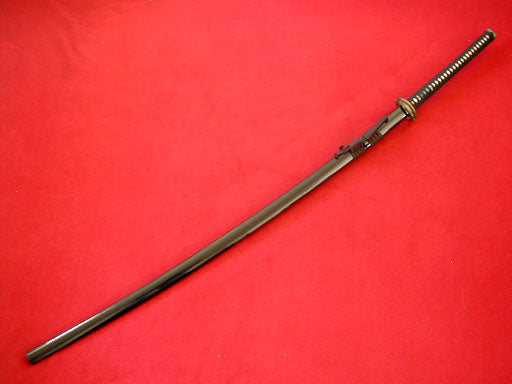Your Cart is Empty


Also known as the nodachi, the ōdachi was a type of traditional Japanese sword invented during the country's feudal period. Shown to the left, it featured a curved, single-edged blade -- similar to that of the katana. With an average length of 35.8 inches (90.9 cm), however, it was significantly longer than its katana counterpart. Most importantly, the ōdachi was a versatile sword with several different applications.
Warfare
Like many traditional Japanese swords, the ōdachi was used primarily as a weapon on the battlefield. Samurai warriors would use them to engage opponents, oftentimes performing horizontal slashing or downward cutting strikes. But the ōdachi couldn't be worn around a samurai warrior's waist due to its exceptionally long blade. Rather, samurai warriors would either carry it on their back or simply carry it -- while sheathed -- in their hand.
The ōdachi couldn't be used with a single hand, however. To effectively use the ōdachi, a samurai warrior would have to hold it with both hands. This gave samurai warriors more leverage, resulting in stronger attacks. But it came at the cost of lower mobility, leaving samurai warriors vulnerable to incoming attacks between swings.
Ceremonies
In addition to being used on the battlefield, the ōdachi was also used in religious and spiritual ceremonies. When preparing for battle, samurai warriors would visit shrines to provide offerings in hope of receiving protection. Some samurai warriors would offer money, while others would offer swords like the ōdachi. Other swords were used as offerings as well, but the ōdachi was a particularly popular offering during feudal Japan.
What Happened to the Ōdachi?
Over time, the ōdachi was phased out in favor of the katana. There were a few reasons for this, one of which being that the katana was easier to produce. Because of its long blade, the ōdachi required more materials than the katana. Furthermore, differential heat treatment was more tedious and difficult with the ōdachi than the katana. Bladesmiths needed access to a large pool of water or oil in which the quench the ōdachi's blade. Traditional water sources that worked for the katana were simply too small for the ōdachi's massive blade.
According to Wikipedia, the way in which the ōdachi was used changed after the Siege of Osaka. With the Japanese government placing bans on long swords, the ōdachi was no longer used on the battlefield. Instead, it was used almost exclusively for spiritual and religious ceremonies.